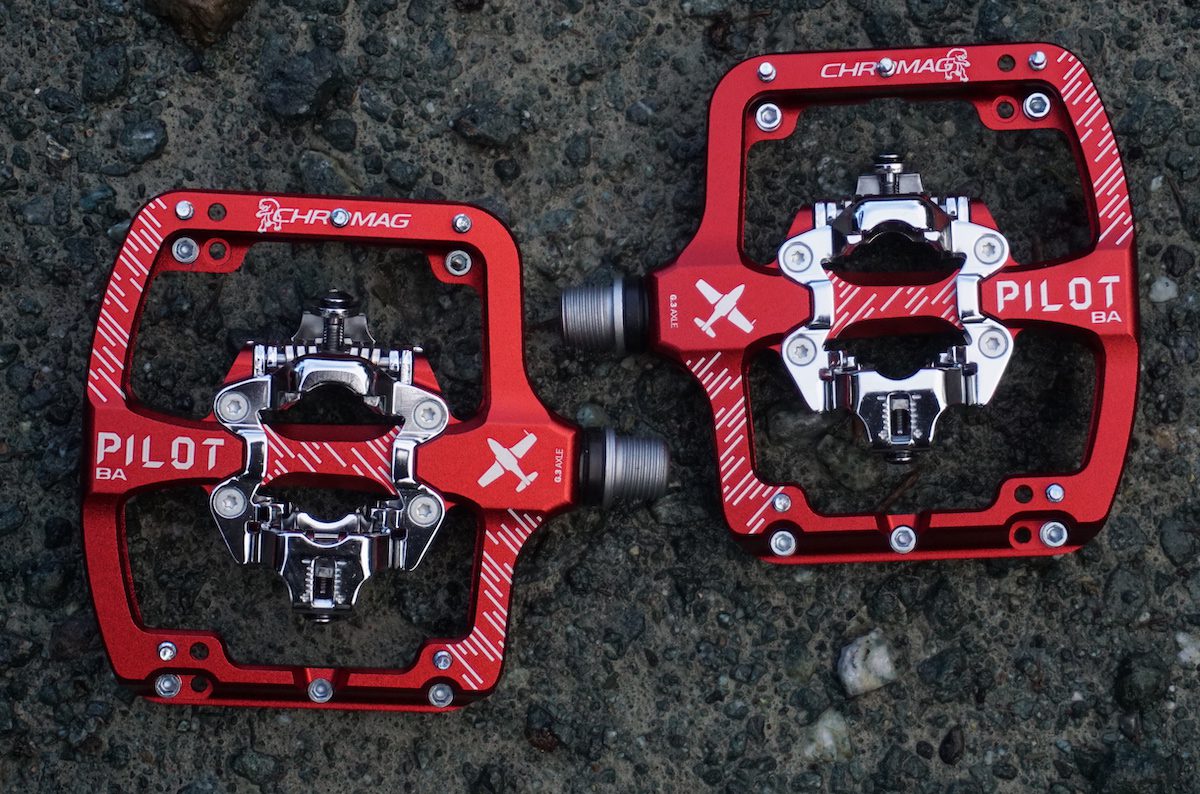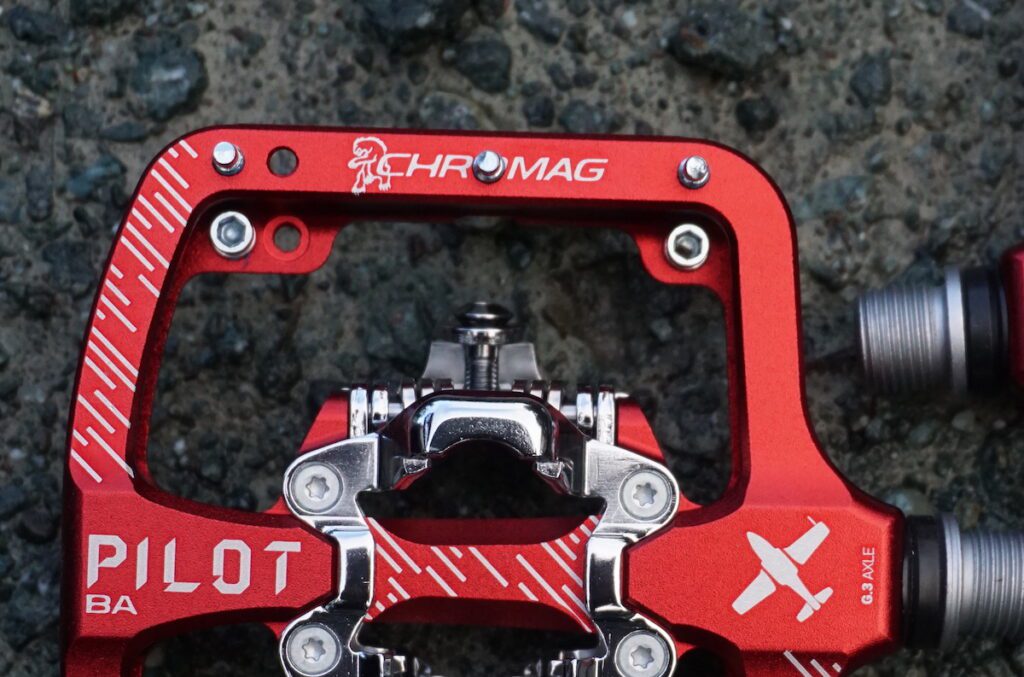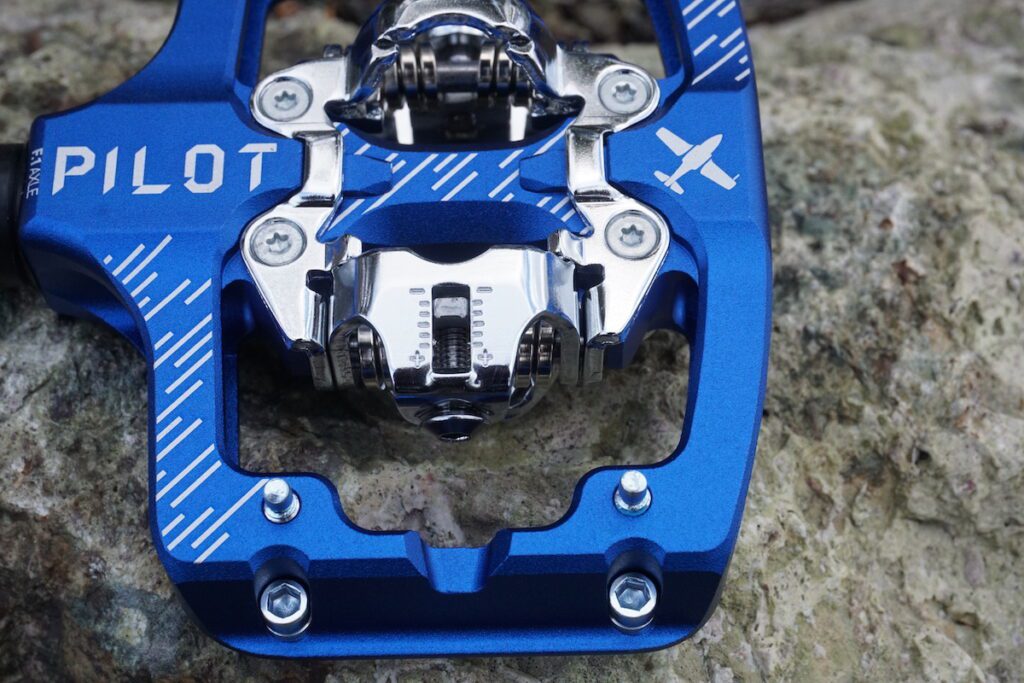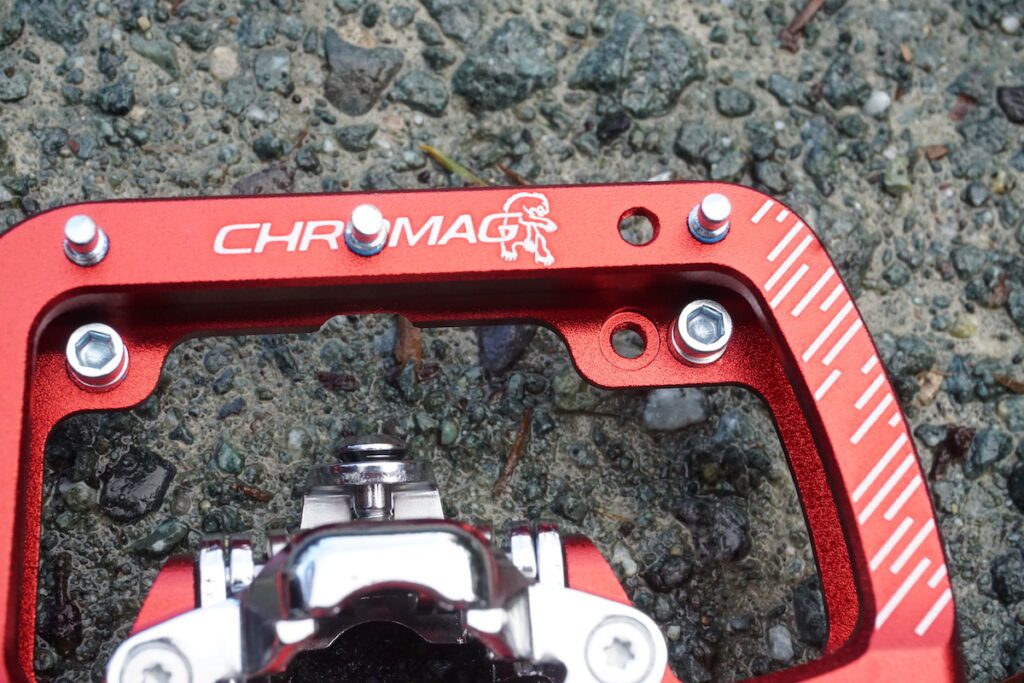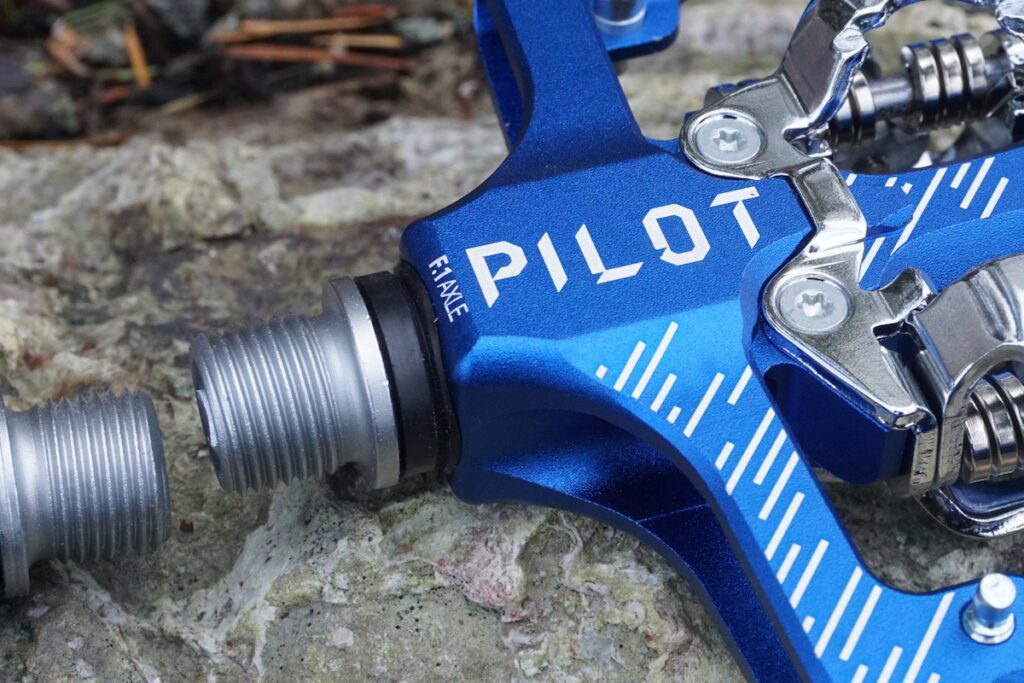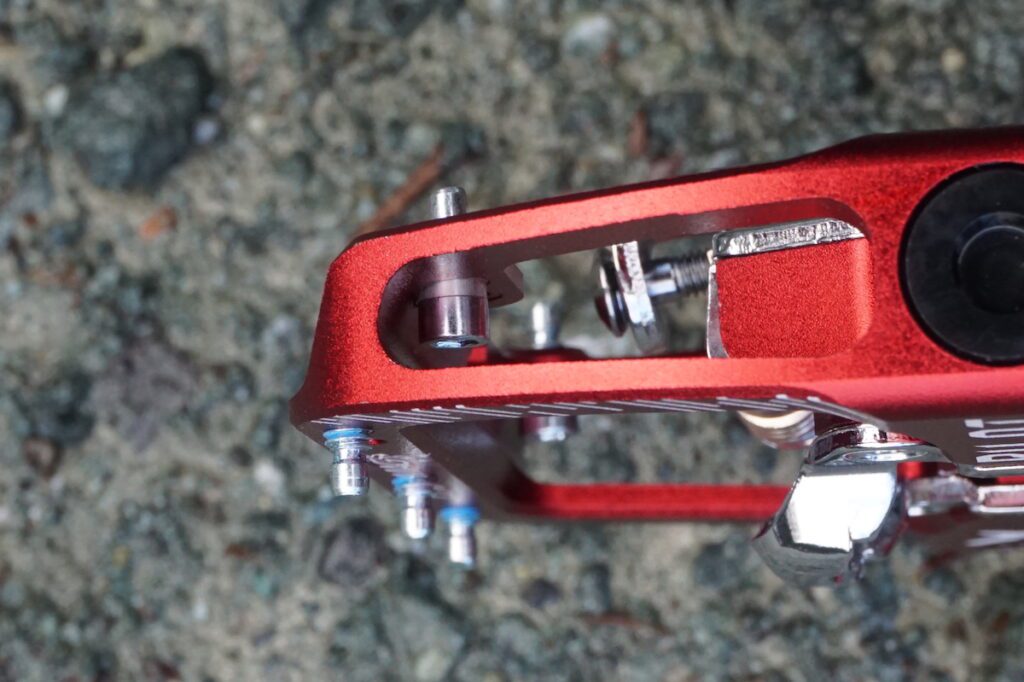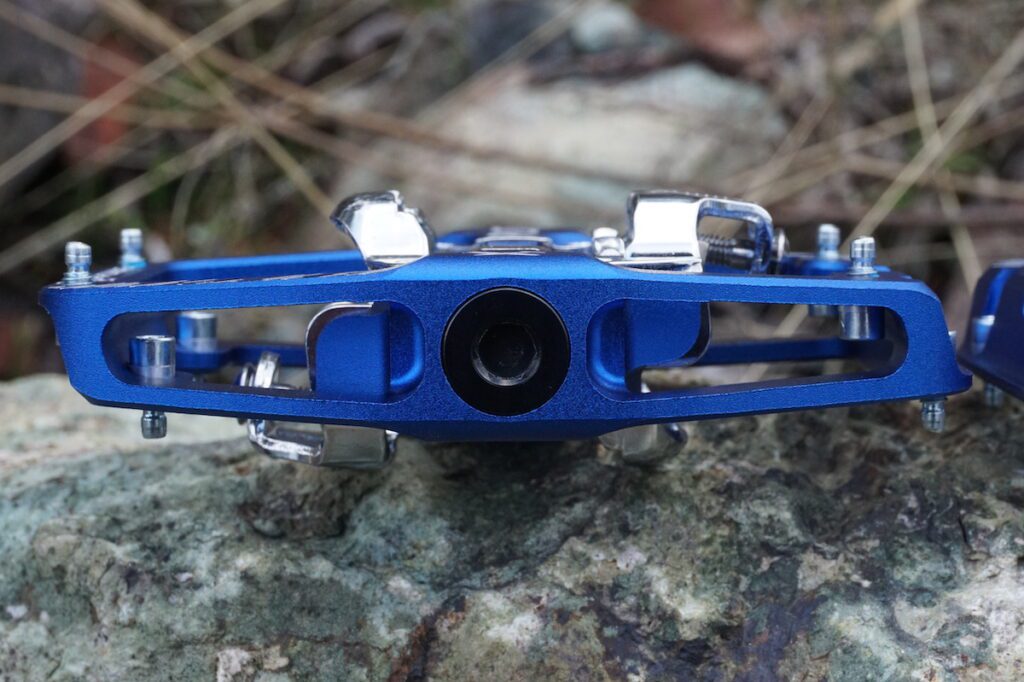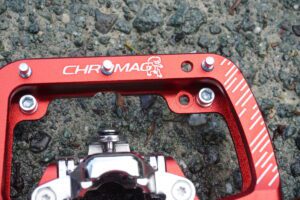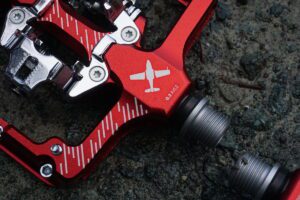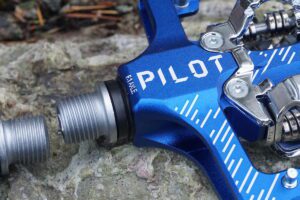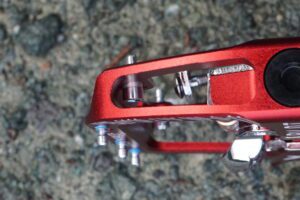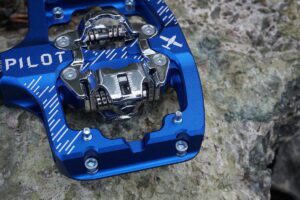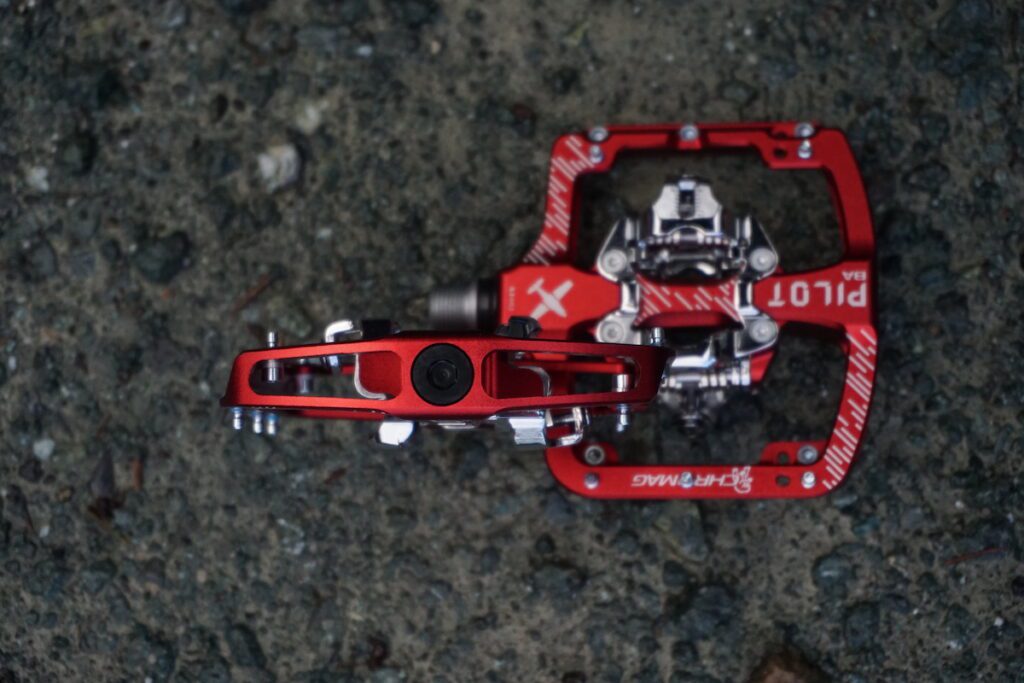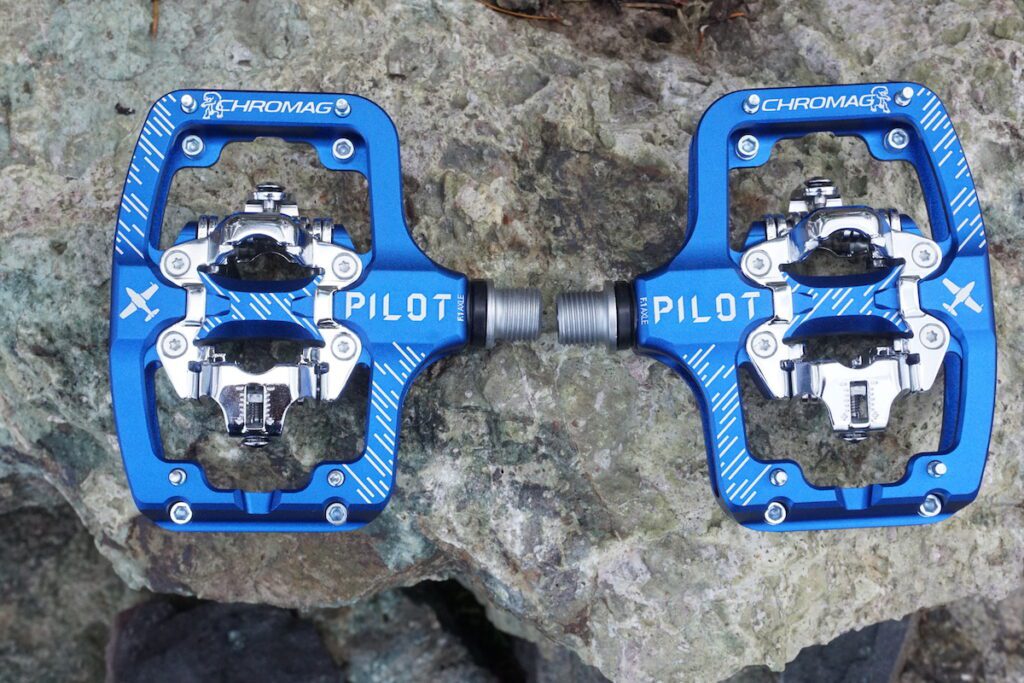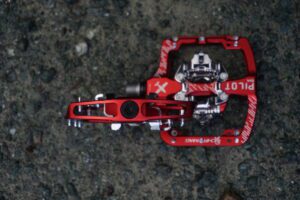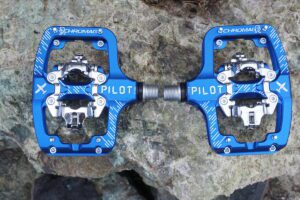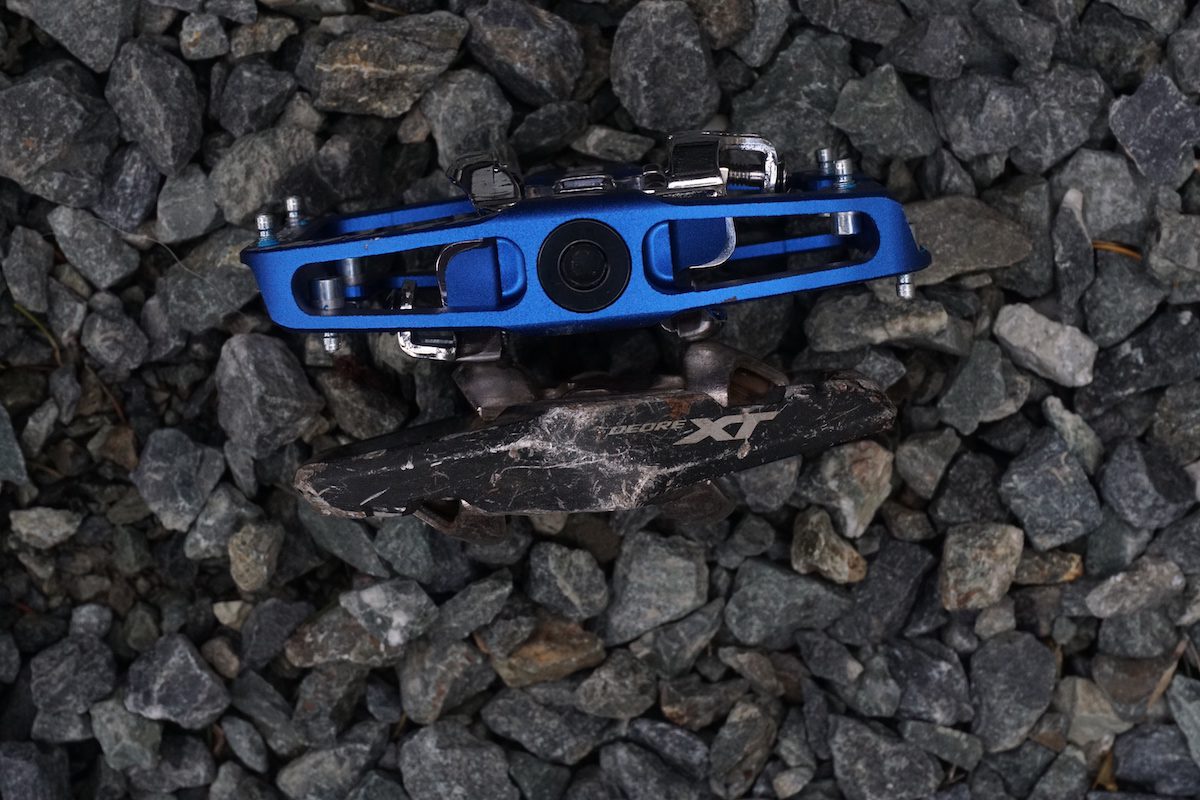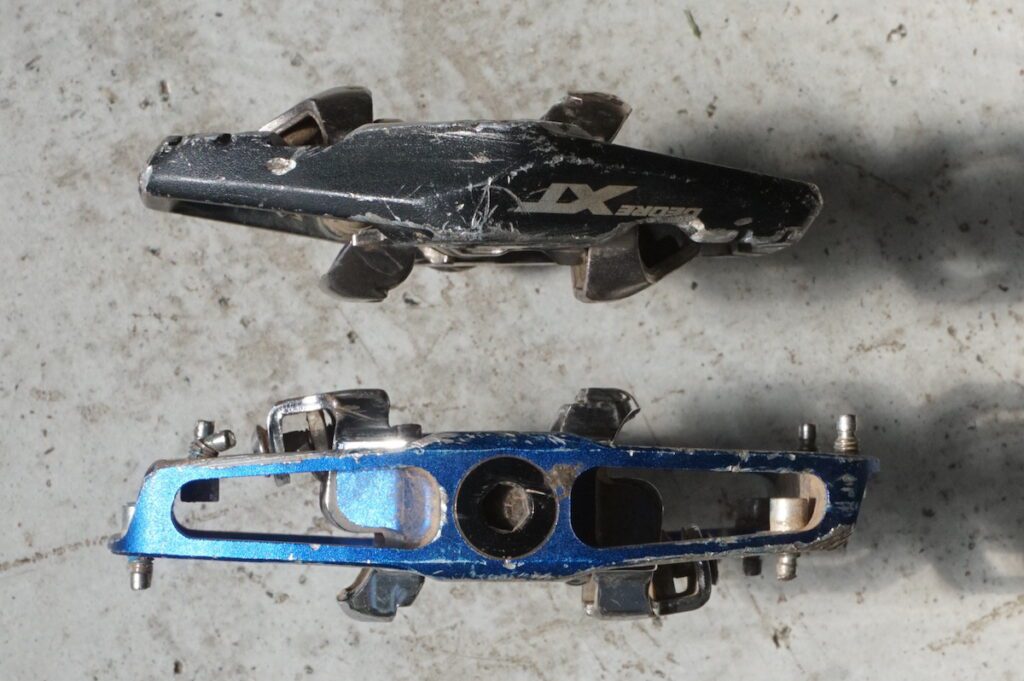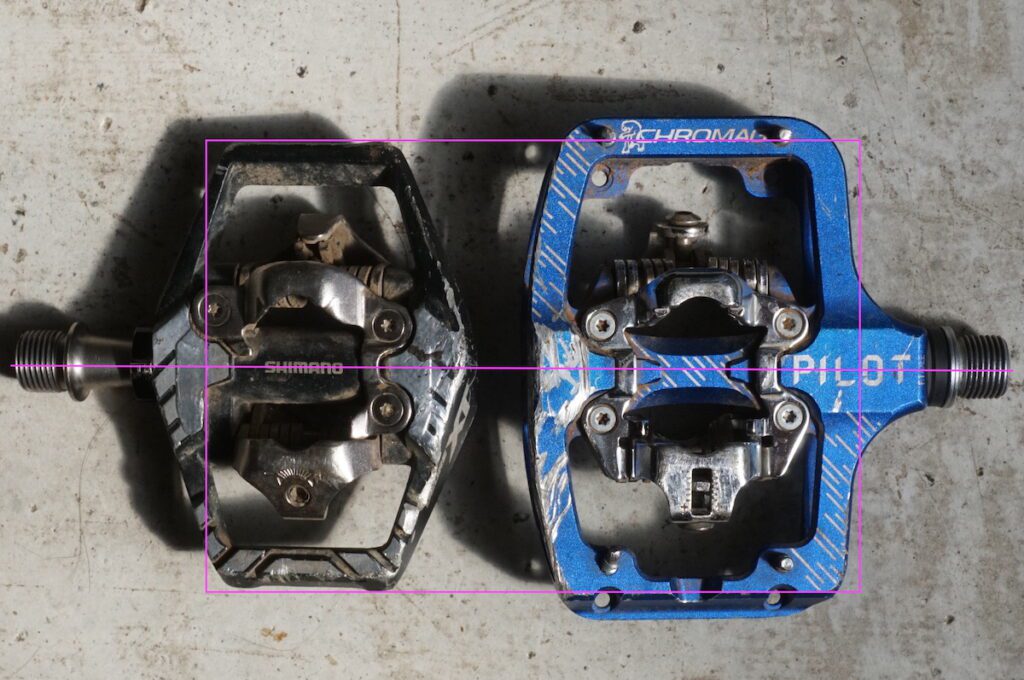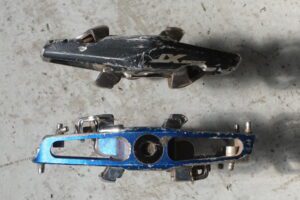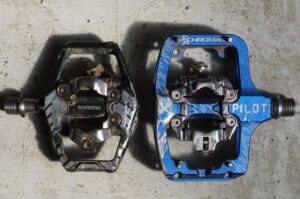Long-term review: Chromag Pilot vs. Pilot BA pedals
Trail testing the Whistler brand's first SPD-compatible offering against the competition
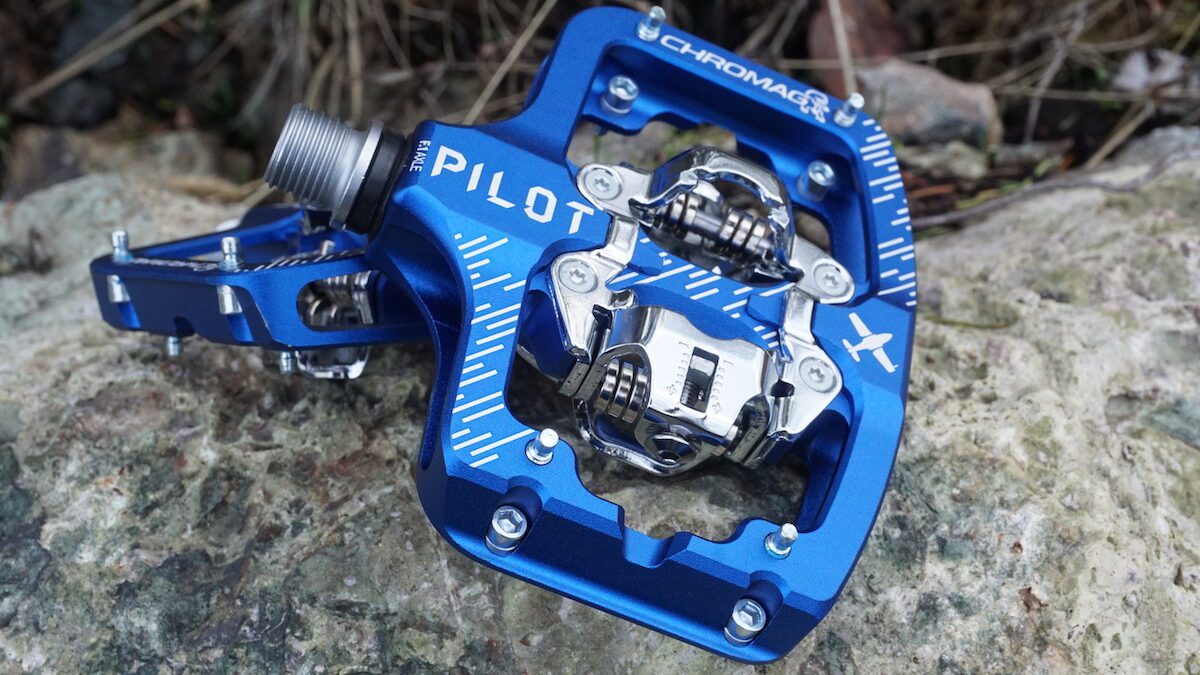
Boutique components and bike brand Chromag has nearly two decades of experience making flat pedals in Whistler. That makes it exciting, and somewhat of a surprise, that the always-bright brand is now making two different clipless pedal options. We were happy to get a pair of both the Pilot and the larger, more gravity-focused Pilot BA in for review.
After spending a year on both pairs of Chromag pedals, the brand’s first clipless offering isn’t perfect but they are pretty dang impressive. Here’s our review of how the Pilot and Pilot BA compare to each other, to our own heightened expectations of a Chromag product and a really, really detailed look into how they compare to some other popular pedals out there right now.
The pedals: Chromag Pilot and Pilot BA
As you would expect from Chromag, neither Pilot model is a race-light cross country pedal. The Pilot is the more trail-focused but still surrounds the cleat mechanism with a sizable, 87x110mm platform. The Pilot BA provides more support with an even larger platform (105x110mm) and more pins. Impressively, while the pedal platforms are sizable both leave enough space that they shed mud effectively.
Chromag equips both with chromoly axles, using a combination of double seal (these pedals are from B.C.), inner bushing and an outer cartridge bearing. The Pilot BA uses Chromag’s G.3 axle while the F.1 system. The Pilot BA’s larger platform also gives them a slightly wider stance at 60mm versus 57.5mm on the Pilot. As you would expect, the larger platform adds weight, too, with the BA sitting at 595g per air while the Pilot are 520g.
Both use adjustable height pins, eight on the Pilot and 10 with an additional placement option on the BA. Both pedals are compatible with all two-bolt SPD cleats. Chromag offers both versions in the same array of five different colour options.
Both pedals had a consistent entry and exit and a predictable release angle. Engagement strength remained fairly consistent, with only very occasional adjustments required to re-tighten the cleat mechanism. There was also measurable range of adjustment, so you can really clamp your foot into the pedal if you want or make the Pilots relatively easy to release from.
Friendly fire: Pilot versus Pilot BA
Just looking at the Pilot versus the Pilot BA, the difference in intent is clear. My experience on the trails went about as you’d expect. The BA provided more support, both side to side and in terms of spreading pressure out over more of the foot. With extra pins and a wider cage, the Pilot BA also have better grip in those sketchy moments when you’re briefly riding unclipped. The very wide platform did lead to more pedal strikes, especially on slower trails, even than the standard Pilot.
The Pilot still provides quite a bit of support, especially compared to some other trail pedals out there, but with a bit more mobility than the BA. The slightly narrower stance on the Pilot’s was appreciated on days when there was more continuous pedalling, too. It’s also really nice having pins that can be set long enough to actually connect with the soles of my shoes, which many trail-focused platform SPD’s don’t quite do.
Chromag’s target for the BA version is clearly in the downhill/park range. While I don’t have a DH bike, I did appreciate the wider platform and extra support when testing eMTBs, which are still heavier, and on bigger enduro bikes. The standard Pilot pedals are also great on an enduro bike, with a platform nearly rivaling Shimano’s Saint pedal, as well as anything short of an XC bike. They’re not as light as some of the competition, sure, but if you’re looking for more support or for more grip than other SPD offerings, these are a great option.
Pilots versus everyone else
While Chromag has a decade of experience making a range of amazing flat pedals, this is the Whistler brand’s first pedal for SPD users. And the clipless pedal market is, well, crowded. But the pair of Pilots do have a few features that make them stand out above the herd, depending on what you’re looking for.
First is support and grip. Both Pilots have a more substantial pedal cage than comparable trail or DH pedals out there. More importantly, this cage is actually shaped so that, with the help of extended pins, your shoe can actually contact the cage. The result is more support than something like Shimano’s XT pedal, where very little of the cage surrounding the cleat mechanism actually touches the foot. The adjustable pins add meaningful grip when fully extended and when unclipped. Wind them back into the pedal a bit and the Pilots give the foot room to move freely while still providing lateral support.
Chromag also makes the Pilots really durable. As you can see from the scuffs and scars on the pedal cages, these have slammed into many rocks and roots over the last year of riding. Other than the cosmetic impact, and a couple or pins that needed replacing, the cages are still going strong. There’s nary been a hint of wobbling or looseness in the Pilots after a year with no service. The Pilot’s sizable axle and weather sealing do mean they don’t spin as freely as some other pedals. But there is no noticeable drag while pedalling.
Chromag uses the same two-bolt SPD design as many other pedals, including Shimano. Not all mechanisms are created equal, though. Chromag uses a more robust cleat mechanism which is, like Shimano trail pedals, bolted onto the cage.
Clipping into and out of the Pilot pedals was easy and reliable, eventually. The short version is that I think these work just as well as any other pedal. The long answer, and the explanation of the “eventually” in the preceding sentence, is in the next section.
Into the weeds: engagement angles and cage sizes
I’ll admit that, while I usually don’t read other reviews of gear I’m testing, by the time I’d received the pedals I’d seen the early feedback that these weren’t as easy to engage as some other pedals. Which was disappointing because they look great and offer features other pedals don’t. And, at the start, my experience wasn’t dissimilar. The engagement was sharp and clear and the release angle was predictable, but at least once a ride the cleat wouldn’t clip in as easily as I’d like. Looking at the Pilots, I couldn’t figure out any difference or explanation for why there might be a difference in performance.
Because Chromag’s Pilots checked all the boxes in every other way, I spent a good bit of time trying to figure out why there was the occasional struggle to clip in. Pedal height, different shoes, and several other adjustments yielded no change in performance. I came up with two possible explanations for the difference and one really simple fix.
The Fix
Let’s start with the fix. As soon as I stopped using other pedals and only rode the Pilots for a few weeks, my problems stopped. It was gradual but, by the end of a week-long road trip, I realized I hadn’t missed a clip-in once in several rides. And I haven’t had the same problem since. So I’ve concluded the Chromags function as well as any other pedal. But, if you’re coming from another SPD, there is a difference in design that requires an adjustment period.
What is the difference? I have two theories. The pedal shape and the angle of the engagement mechanism.
The differences
First is the angle of the engagement mechanism in relation to the pedal cage. On Shimano trail pedals (and on, say, Time’s Speciale pedals), the pedal body is on an angle relative to the cleat mechanism. On the Pilot’s, they are nearly parallel. This is part of what gives the Pilots more support compared to either Shimano or Time, where the pins barely touch the soles of most shoes.
Second is the shape. The cage on the Pilot (not Pilot BA), extends slightly further forward than a comparable Shimano trail pedal. Functionally, this doesn’t change anything. But I think that slight difference made a difference in where the pedal looked to be in peripheral vision. This is a bit more tenuous, admittedly, but it would explain why I didn’t have as much of a problem with the BA version.
Is this still a problem?
Together, I think these slight differences explain why I initially would miss the occasional clip-in and why I was able to get used to them when I stopped switching back and forth between Chromag and other pedals.
How can I say this isn’t still a problem with the Chromags? Well, when I pulled out a pair of Shimano pedals again I had the same issue, occasionally missing the cleat, that I initially had with the Pilots. So it must be a matter of habit, not a lack of function between the two.
Compared to other pedals, the Chromag’s are still heavier. The Pilots are 520 grams per set whereas Shimano’s XTR Trail (M9120) are a hair shy of 400 grams (398g, claimed) for a similar price. The tradeoff for weight is that the Pilots do provide noticeably more support and grip.
Review: Chromag Pilot and Pilot BA
Chromag has two really interesting pedal options in the Pilot and Pilot BA. They’re very solid and durable. Both look great, as most Chromag parts do. The adjustable pins are actually long enough to connect with shoes and provide some additional grip. The long, solid cages provide plenty of support, compared to other trail pedals.
It’s not a cheap flight, though. Chromag asks $215.00 for the Pilot and $225 for the Pilot BA. That puts them in competition with the top end of some more well-established brands like Shimano’s XTR (around $270) or Saints (around $210) and a little bit cheaper than the similarly boutique brand Hope’s Union pedals.
After years of creating an array of flat pedals, Chromag makes a strong entry into the world of SPD pedals. The Pilot and Pilot BA are both great options for riders looking for a little more support, either for aggressive riding or just to have more stability and confidence on the bike. They might have taken a second to get used to, but these won’t be coming off of my bike anytime soon.
